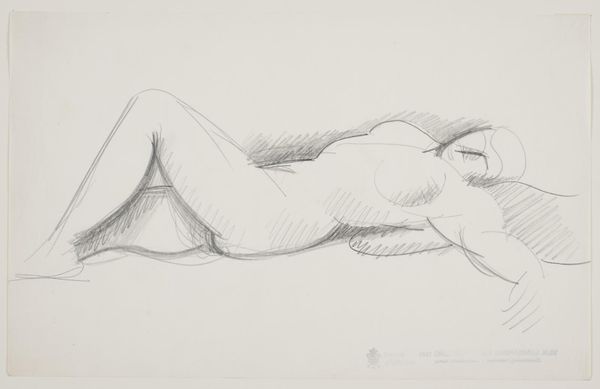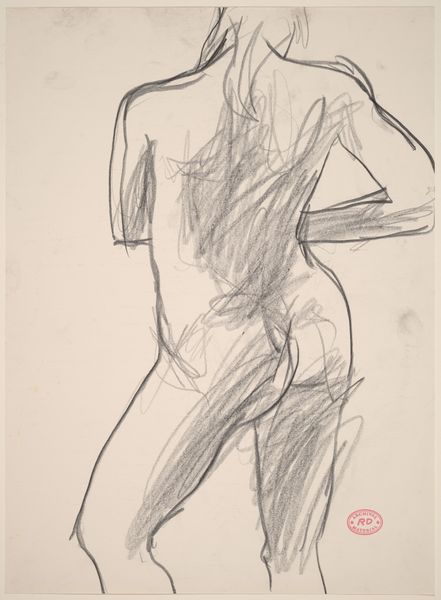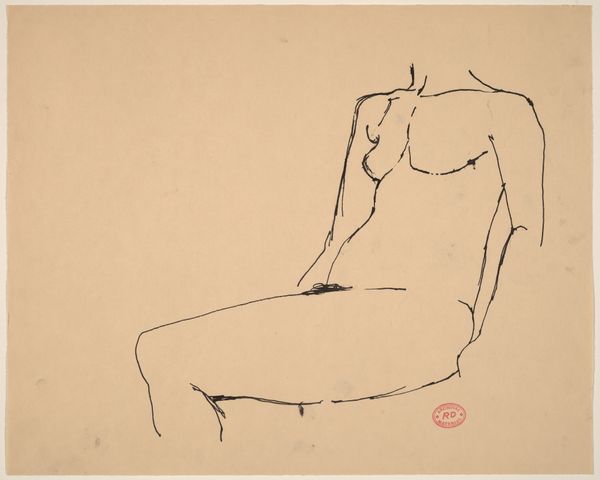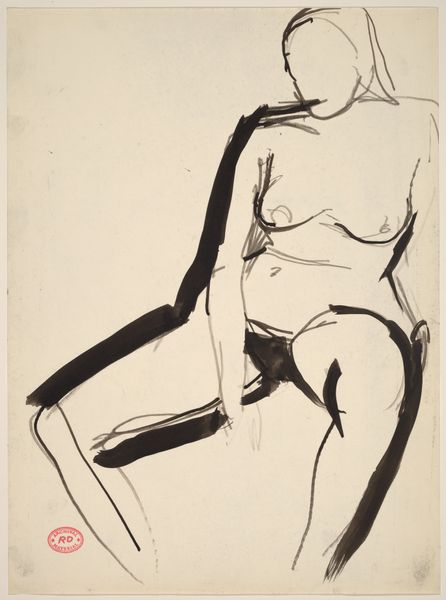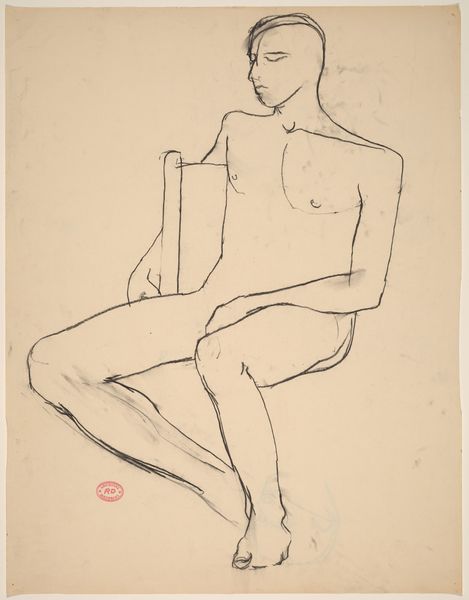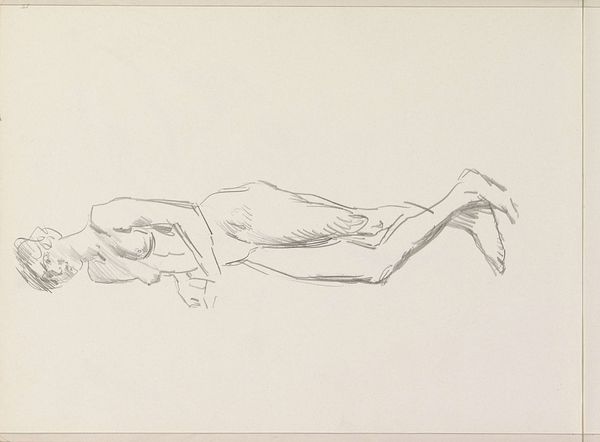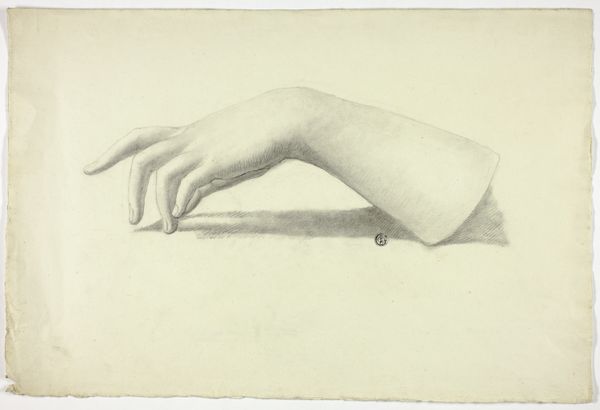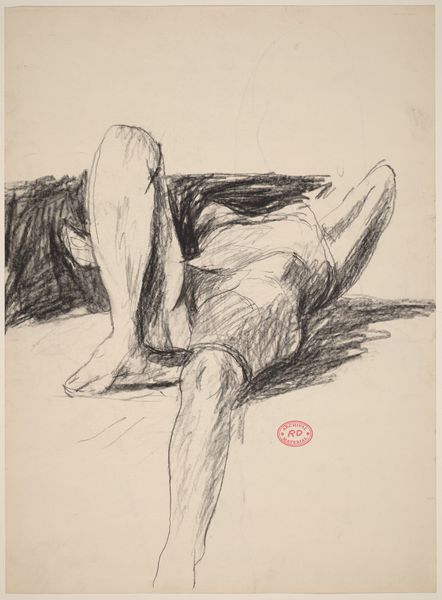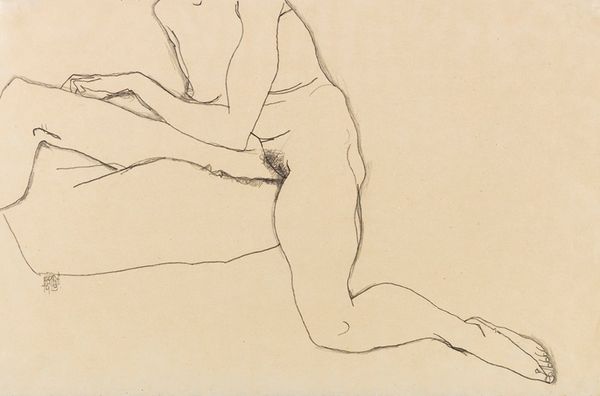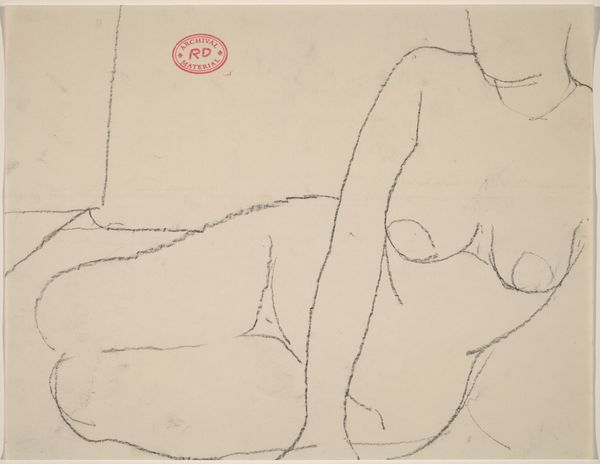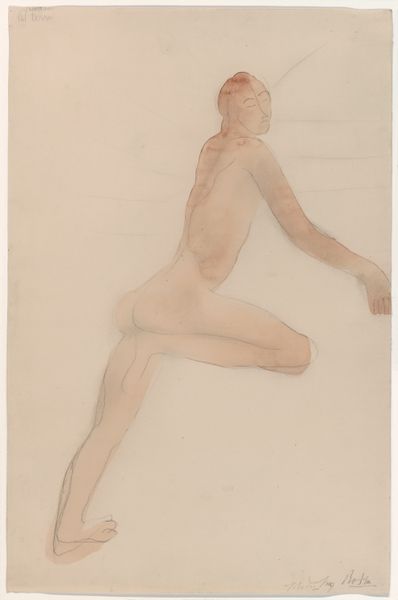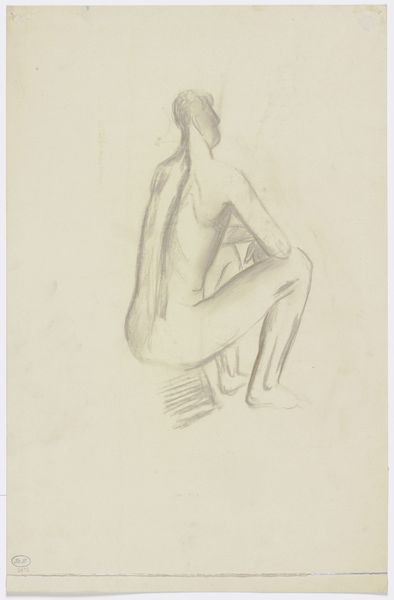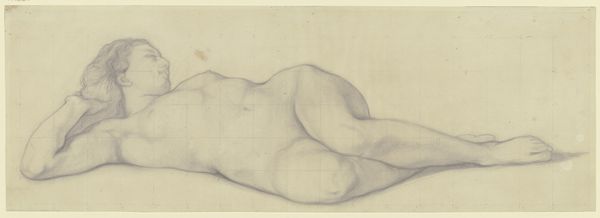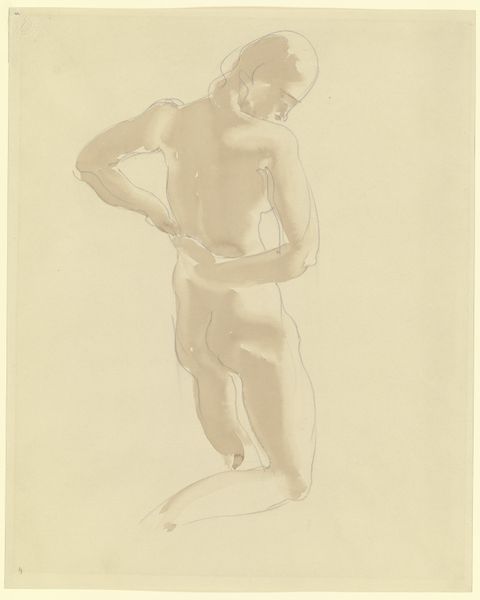
Copyright: Louise Bourgeois,Fair Use
Curator: Louise Bourgeois's “Woman-House” from 1994, executed in marble, is really striking. There's something immediately unnerving about it, the way the simplified house form leans against the languid female figure. What’s your initial response? Editor: Austere. Almost cruelly simple in its joining of form and material. That stark marble speaks to a kind of brutal permanence. But also, let's consider Bourgeois's engagement with the materiality of this piece: quarrying, carving, polishing... these processes have a long history tied to gendered labor and social hierarchies. What narratives are embedded in the marble itself, before the artist even began? Curator: It feels to me that she’s intentionally stripping away layers of protection and societal expectation, forcing a confrontation between domesticity and the female form. You can almost feel the coldness of the marble, a sense of vulnerability exposed. It’s a harsh and poignant kind of truth, like a repressed memory bubbling to the surface. Editor: Exactly. The act of sculpting – removing material to reveal form – mirrors Bourgeois's own extraction of meaning. The smoothness of the marble belies the raw labor and historical context involved. What I find intriguing is how the scale affects our understanding. Is this house a sanctuary or a prison? Is the woman burdened by it, or somehow emerging from it? And how does the choice of marble as a luxury material complicate its connection to these questions? Curator: It definitely hits at conflicting emotional states, right? A sense of refuge and constraint simultaneously. It resonates with her personal exploration of trauma and identity. Like she’s almost unearthing something deep within herself and solidifying it into form. And this solid marble… almost suggests this emotion is trapped here forever. Editor: The smooth surface hides the labor, obscures the act of making, which serves a distinct aesthetic agenda, absolutely, but it also invites an interpretation that factors in who gets to do the making, and what power dynamics are at play here. It definitely takes art beyond merely aesthetics or self-expression, prompting examination of larger issues related to creation. Curator: I see it. Thank you. Thinking of this interplay… how gender and material impact art is truly thought provoking. Editor: Indeed. Thinking more broadly of how even Bourgeois’ choices relate to labor relations changes the entire context of appreciating art and makes its stories ever deeper and more significant.
Comments
No comments
Be the first to comment and join the conversation on the ultimate creative platform.
